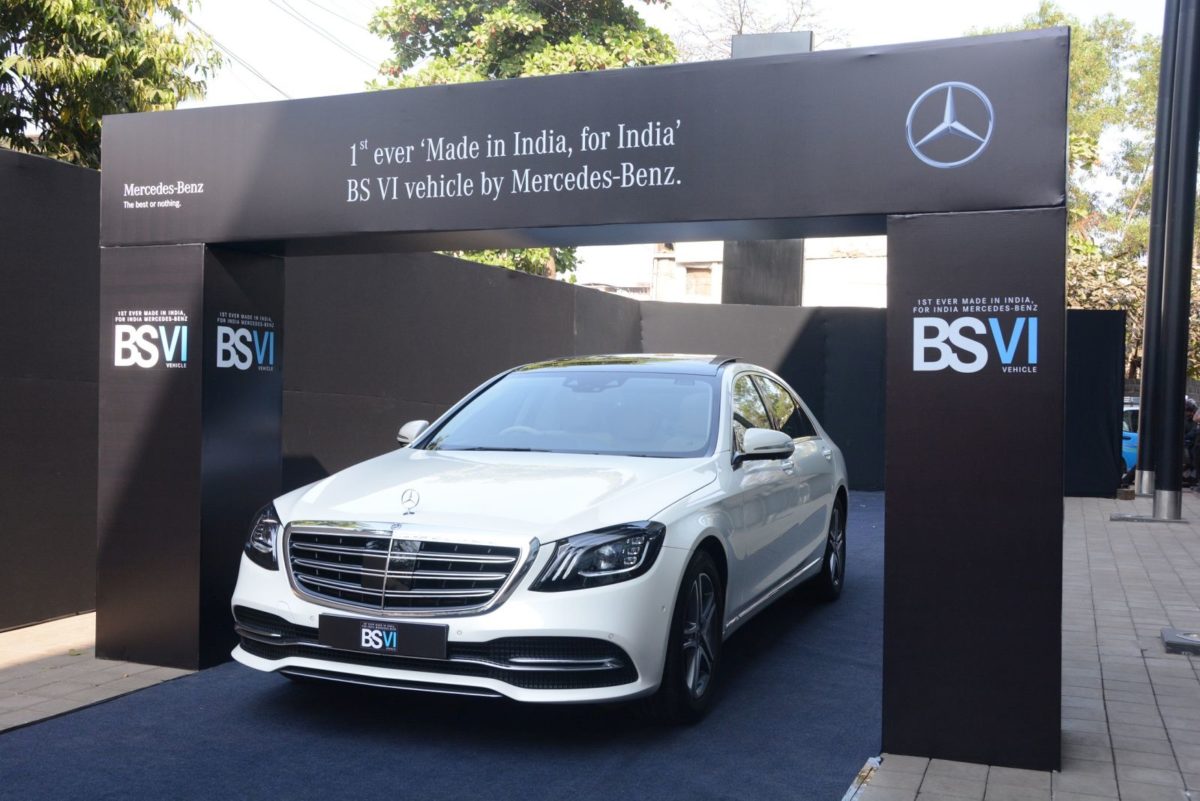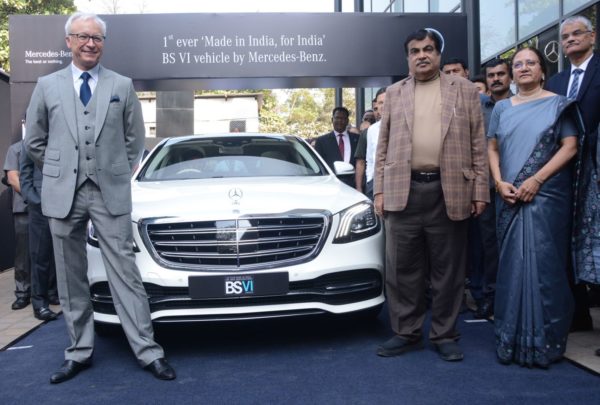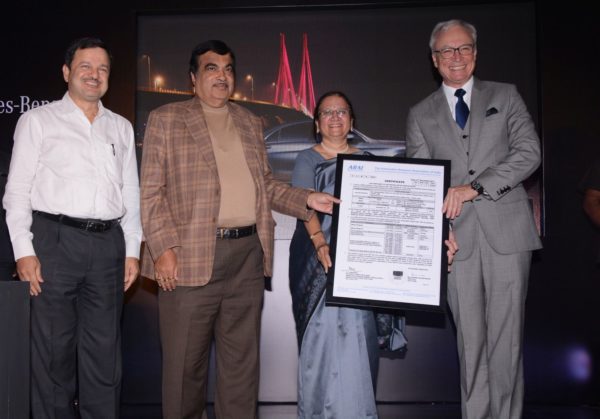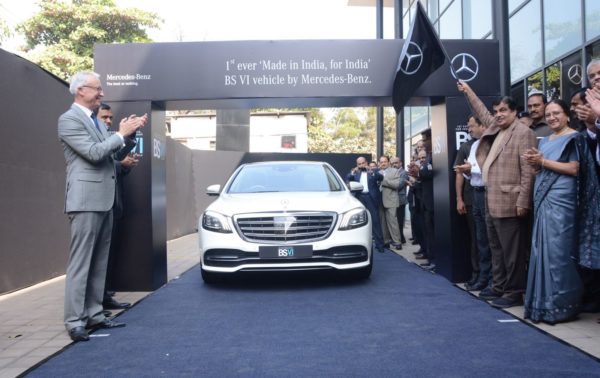Mercedes-Benz has become the first automobile brand in India to launch the first ever BS VI compliant vehicles, ‘Made in India, for India’.
The Certificate of Compliance to the CMVR (Central Motor Vehicles Rule) for Mercedes-Benz India was presented by ARAI Director, Rashmi Urdhwareshe to Roland Folger, MD & CEO, in the presence of Nitin Gadkari, Minister of Road Transport Highways & Shipping and Water Resource, River Development, & Ganga Rejuvenation and Abhay Damle, Joint Secretary, Ministry of Road Transport Highways and other dignitaries.
Benefits of BS VI standards:
BS-VI standards are far-reaching in scope and incorporate substantial changes to existing Bharat Stage IV emission standards. Of particular note is the tightening of Particulate Matter (PM) & NOx mass emission limits. In a BS VI vehicle the NOx limit reduction is upto 68% and PM limit reduction is achieved at 82% in BS-VI, compared to that in BS-IV.
The Mercedes-Benz S 350 d has undergone stringent emission test related to BS VI emission at ARAI, Pune and has been certified as BS VI compliant. Following are some of the tests done at ARAI for the certification of the BS VI engines:
- Tail pipe emission test in laboratory – limits lowered to 68 to 82% as against BS-IV
- Engine power test – BS-VI fuel based test
- On board diagnostic (OBD) test – Stringent OBD test
- Real Driving emission (RDE) – On road emission performance test
The S 350d vehicle comes with a engine and exhaust after treatment technology, such as refined engine, EGR, DPF, SCR etc. These technological measures lead to reduce the emissions significantly and meet the BS-VI regulations with huge margins. The S 350 d features the most powerful diesel car in Mercedes-Benz history.
The new six-cylinder Diesel engine is designed to comply with future emissions legislation (RDE – Real Driving Emissions). All the components of relevance for efficient emissions reduction are installed directly on the engine. The integrated technology approach combining the new stepped-bowl combustion process, dynamic multi-way exhaust-gas recirculation and near-engine exhaust-gas after treatment, for the first time combined with variable valve-lift control, makes further reduced consumption with low emissions possible.
Although the output has increased noticeably compared to the preceding model, the new engine consumes up to six percent less fuel. The special traits of the top-of-the-line engine in the diesel family include the stepped-bowl combustion process, two-stage turbocharging and, for the first time, the use of CAMTRONIC variable valve-lift control. Its design features a combination of aluminium engine block and steel pistons as well as further improved NANOSLIDE coating of the cylinder walls.




